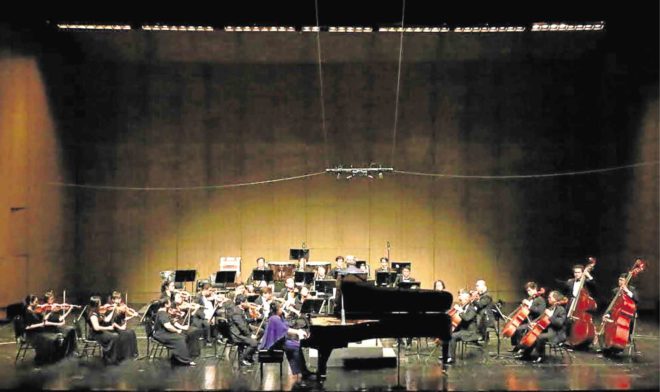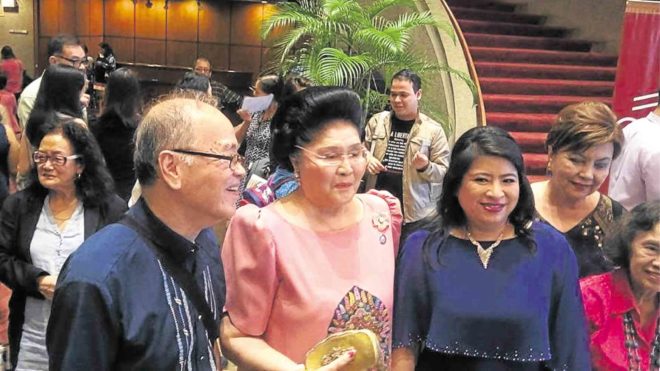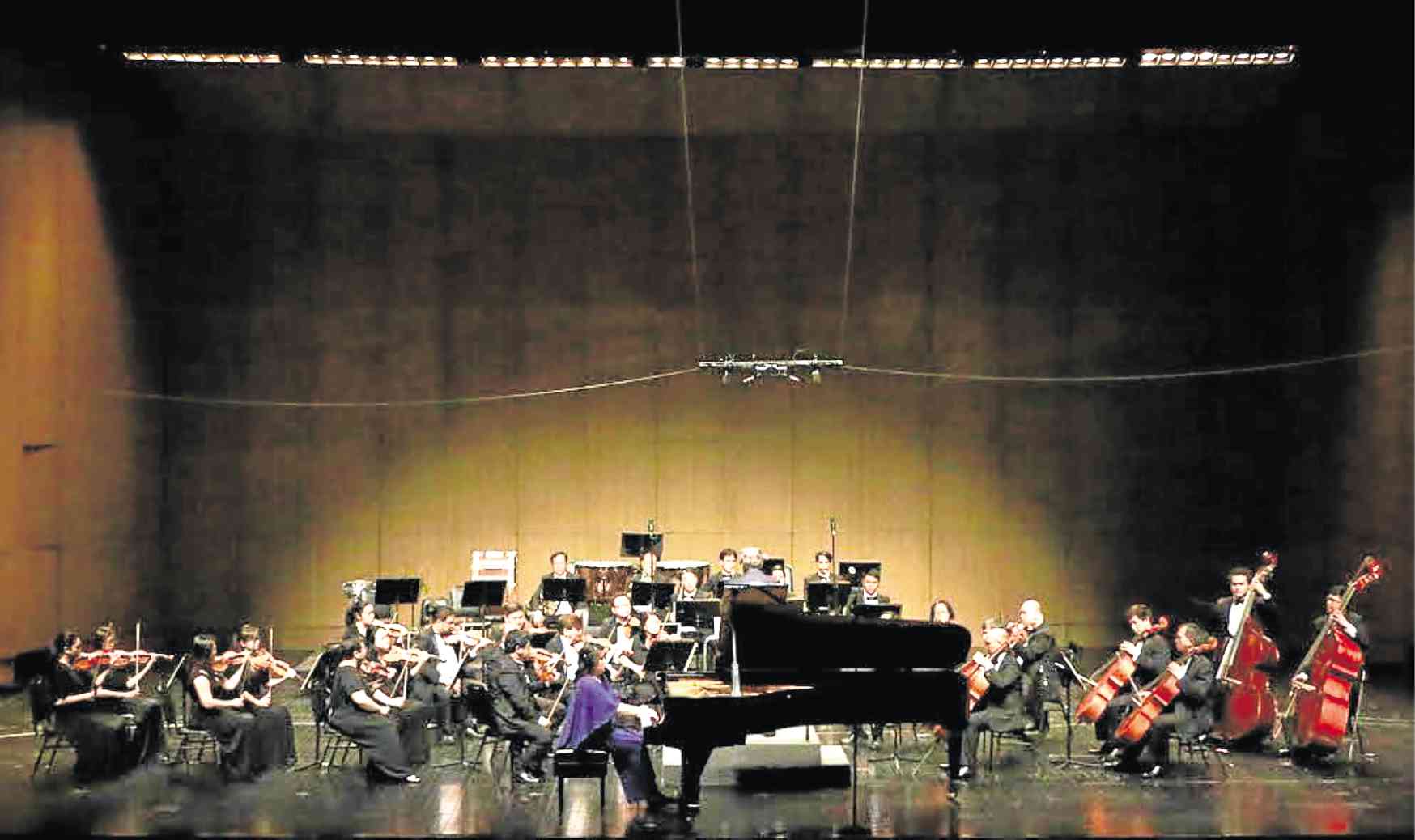
By today’s standards, W0lfgang Amadeus Mozart was a prolific “millennial” in 1786, earning a living as performer-composer in Austria.
In this piano concerto, it turned out that he omitted the trumpets and timpani and replaced them with oboes and clarinets, resulting in a dark yet mellow tone.
In a performance of Mozart’s “Piano Concerto No. 23” with the Philippine Philharmonic Orchestra (PPO) under maestro Yoshikazu Fukumura, the orchestra was reduced to a small chamber group, affording the concerto the kind of intimacy one only finds in chamber music.
Indeed, the piece was a test for pianist Hiyas Hila, as a soloist and as a chamber musician. She knew her concerto inside and out, and her demeanor showed she was in excellent Mozart frame.
Dressed in a willowy lavender gown that allowed ample freedom of movement for her hands, Hila navigated the movement’s sonata form with ease. As a Mozart observer pointed out, the movement introduced the music in a double exposition, with the theme introduced by the orchestra and later restated by the soloist, which Hila delineated with a playful but authoritative mark.
As a result, both soloist and orchestra successfully defined the graceful lyricism of the concerto’s opening themes.
Poignant and pensive
The second movement called to mind what the country is going through, as both orchestra and soloist interpreted some of the most poignant and pensive music the composer had ever composed.
Indeed, the reading of the second movement was deeply touching, and its melancholy thread enough to conjure images of the suffering in Marawi, and of dead soldiers and civilians.
The playful finale erased the piquant gloom of the adagio movement. Hila had commendable rapport with the orchestra, making it pure chamber music at its best. The audience savored a magical rondo which showcased Mozart’s mercurial wit and humor. Both orchestra and soloist expertly maneuvered the unexpected key changes with the concerto.
As the applause wouldn’t end, Hila obliged with an encore and played a technically tricky “Kulintang” by Ramon Santos.

As it sounded, the piece was truly inspired by the Mindanao musical instrument, the kulintang, and one could imagine what pianists go through in performing this piece.
Hila lived up to the kulintang challenge and echoed deeply lyrical images of Mindanao. It was a timely encore piece as the country mourns the senseless loss of lives in Marawi.
Present at the concert was former first lady Imelda Marcos, who founded the Philippine High School for the Arts 40 years ago. —CONTRIBUTED












































